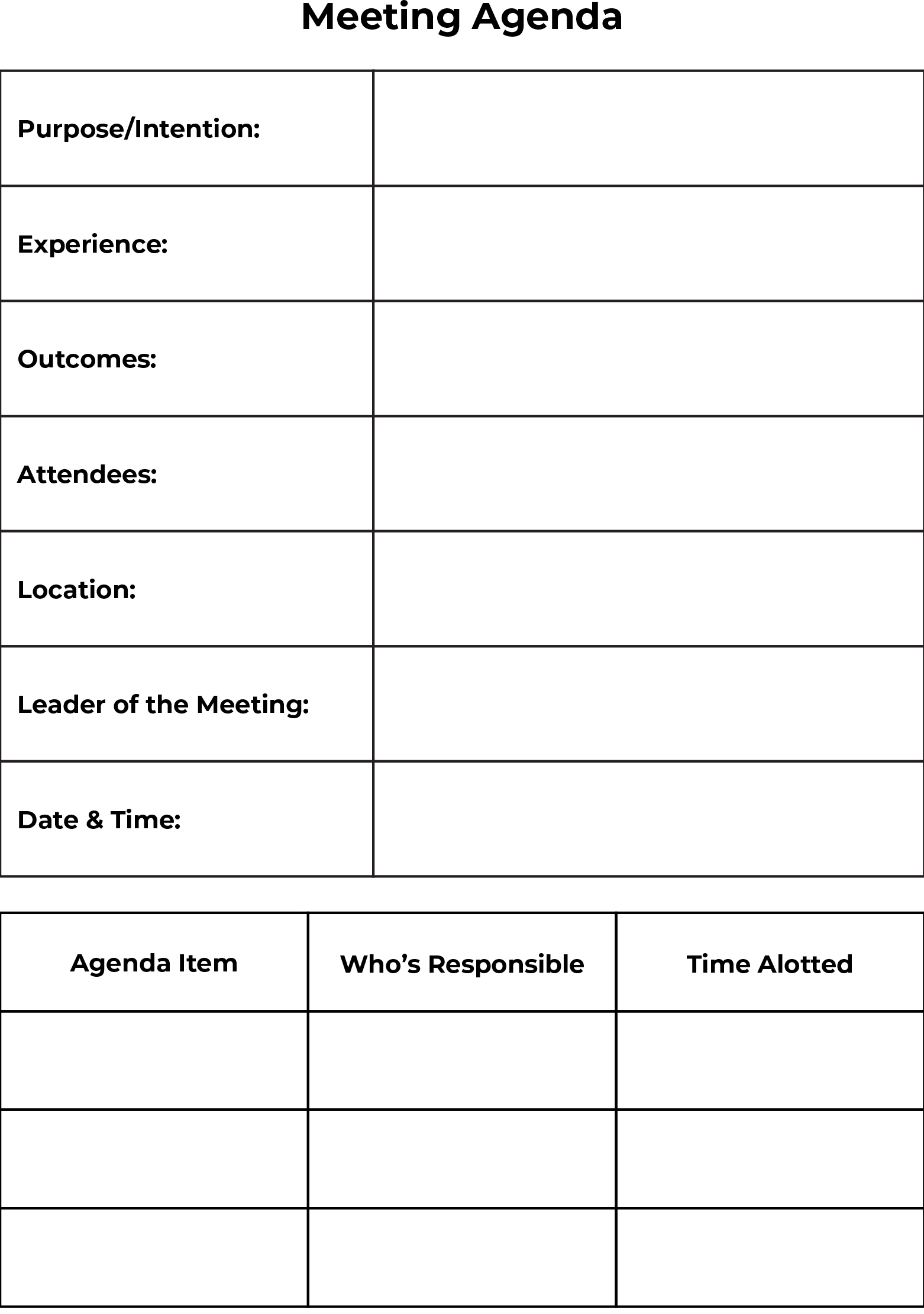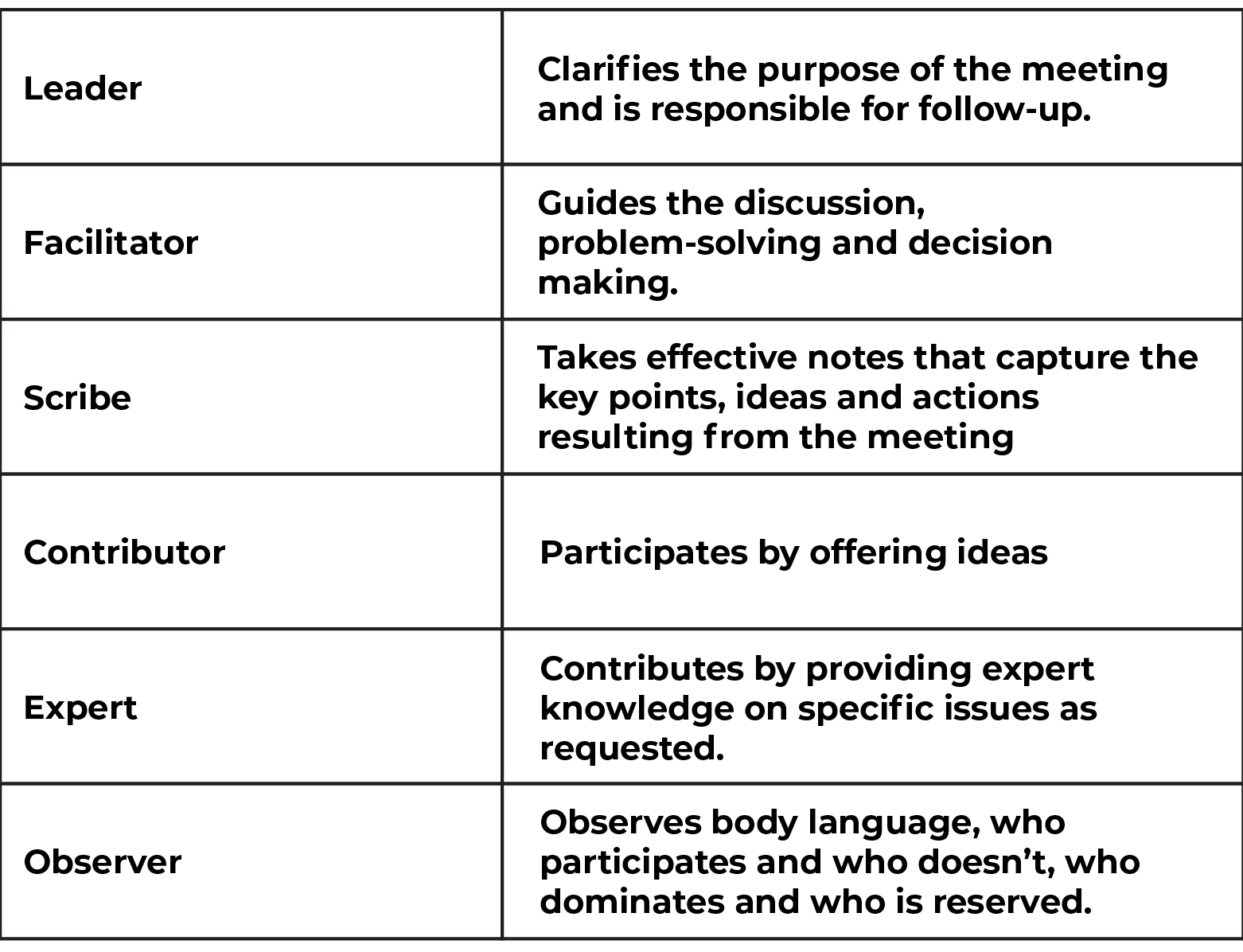Why is the design and execution of Effective Meetings a priority for every leader?
Three reasons why every leader needs to learn how to design and execute an Effective Meeting:
- Time
- Generating action and results
- Team Unity – people feel included, important, trusted and they feel like they are contributing to the success of the organization.
I have three questions to ask you, to support you in designing an Effective Meeting:
- “What are your conditions of satisfaction to support the possibility for an Effective Meeting occurring at your company?”
- “What agreements are in place at your company currently to support having Effective Meetings?”
- “What agreements need to be put in place at your company to support having Effective Meetings?”
Here are a series of “Conditions of Satisfaction” to consider supporting the design of an Effective Meeting:
- Background of relatedness: Shared commitment – people who are attending the meeting are aligned to the company’s Vision, Mission and our core values such that the team lives by them to create action. There is a high level of trust to foster quality conversations that will drive action from those who are present in our meetings.
- Clear intention/purpose: Some purposes for a meeting might be:
- To generate Ideas – a Possibility Conversation
- To generate a Decision – an Understanding Conversation
- To generate Action – A Performance Conversation
- To generate Learning – A Closure Conversation
- Key Behaviours: Some specific behaviours to support an Effective Meeting are:
- A clear agenda that is sent out 3 to 5 days before the meeting so people can prepare for the meeting
- It is safe for people to share their voice/ideas/comments
- It is a supportive space
- Deep listening is present
- People are willing to be courageous
- People are accountable and willing to be held accountable
- Dialogue vs monologue
- Collaboration/Inclusion
- People come to the meeting prepared to participate
- Clear outcome: Be intentional about designing the potential outcome we want to create for this meeting. Here are two examples of potential outcomes of an Effective Meeting:
- Clarity has been created to generate and forward action.
- People leave the meeting inspired and empowered to take action.
- Feedback
- Tools to Support an Excellent Meeting
- Clear Agenda: Only include the number of agenda items your group can realistically cover in the allocated time for the meeting.

- My participation: What does my participation look like?
- I am willing to be:
- Open to new ideas
- Prepared before I attend the meeting so that I can add value to the conversation
- Present
- Committed to genuinely listen to others
- With resistance – my resitance and others’ resistance
- Courageous with my voice to challenge the staus quo and share my ideas
- I am willing to be:
- Quality communication: Holding people accountable when they are not accountable to their promises
Everyone in attendance at any meeting speaks in generative language such that when they speak, they are:- Clear
- Concise/Specific
- Accurate
- Respectful
- Inclusive
- Direct
- Another fundamental component of an Effective Meeting is when the team and the facilitator of the meeting can hold colleagues accountable when they are not being accountable, to their promises without making them feel small, wrong, or judged for not honouring their promises and able to put them back into action.
This is done by having a courageous conversation that includes the following question – “What can you see that is missing for you to honour your promise?”
- Is there a conversation missing (with self or others)?
- Is there a skill missing?
- Is there an agreement missing?
- Is there a support structure missing?
- People
- Processes/systems
- Practices
- Tools
- Is there a “System of Accountability” missing?
- Is there an alignment to our culture missing?
- People Roles in the Meeting
Everyone in attendance is involved in the meeting
Types of Meetings
- Daily Check in Meeting
- Time Required: 10-15 min – 8:30am – 8:45am
- Purpose: To create clarity for my day by sharing with my colleagues my priorities and acknowledge accomplishments
- The Leader of the Meeting
- Who is in attendance
- Meeting Outcome: The Team leaves the meeting supported, focused and empowered for the day.
- What is missing to make this an Effective Meeting?
- Bi-weekly tactical Meeting
- Time required: 10am – noon (Second & Fourth Mondays)
- Purpose: To collaborate and focus as a Leadership Team on your 90-day action plan.
- The Leader of the Meeting:
- Who is in attendance:
- Meeting Outcome: The Team leaves the meeting with clarity and accountability to their key action items to support the strategic goals of the company.
- What is missing to make this an effective meeting?
- Monthly Strategic Meeting
- When: Third Monday 9am to 1pm
- Time Required: Four hours with 1-2 hours per topic
- Purpose: To review and generate action that will affect the company’s strategic business plan for the next twelve months to two years.
- Leader of the Meeting:
- Who is in attendance:
- Meeting Outcome: The Team leaves the meeting engaged and committed to execute their key components of the Strategic Plan
- What is missing for this to be an Effective Meeting?
- Daily Check in Meeting
- Clear Agenda: Only include the number of agenda items your group can realistically cover in the allocated time for the meeting.
“When properly utilized, meetings are actually time savers. That’s right. Good meetings provide opportunities to improve execution by accelerating decision making and eliminating the need to revisit issues again and again.”
– Patrick Lencioni


